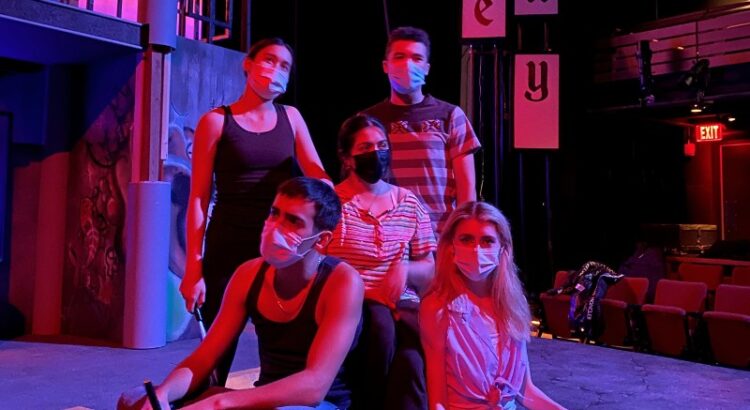Somebody’s Children, a tale of children who lives just next door to the land of the fairy tale, Disney land, but whose life isn’t so fairy-tale-like, asks the audience whether it’s really ok that some people are actually living in sucn unstable homes and clearly provides the answer-it’s not Ok. The play is written by José Casas, assistant professor at the University of Michigan, and the actors were consisted of students in SMTD. The setting takes place in a run-down motel just outside Disneyland, and while their personal stories are told in beautifully and powerfully written vignettes, the sorrows in characeters’ lives expands into a problem of social structure by the contrast of their unsafe living place and children who laughs happily in Disneyland, which is so close to where they are living. The stage design made this interesting setting even more clear – there was a huge and gorgeous sign that spells out ‘Disneyland’ on the right side of the stage. Glowing white, the sign had an aura that made sure that the audience was not missing it, but the actual shape of Disneyland was not shown; as if symbolizing that the real Disneyland did not existed to children living in the motel. With this direct contrast, the deprived feeling and anger that the characters are feeling is strongly delivered while raising the point that they could have also been the careless children who have a great time in Disneyland, and highlighting the brutallity of reality in which the children were pushed into. They were somebody’s ‘Children’. Their sorrow is valid and raw, but they are children, who should be kept away from those things. Who are to protect them? the play asks.
I want to highlight the actor’s amazing performances – as mentioned before, the play mainly consited of vignettes, so the lines were symbolic and poetic, rather than straight to the point. The actors expressed out the emotion that the children is reciting the vignette so well; the sad but happy, nostelgic look of a girl who danced with her imaginary quinceañera dress, how two boys exchanged roles to between a police man that stopped them on a night’s walk to get some ice and the boys who got pinned down even though they did nothing wrong swiftly was just awestrucking. Production was amazing as well – using sitting actors as poles to put up police line was not only visually intersting but also symbolized that the children in the motel were deeply embedded in all the tragedy happening in the place.
In all, Somebody’s Children was a beautiful and socially-conscious play that used experimental lines-vignettes-to deliver the theme and did it, not over-dramatically but emotionally affluently. Highly recommend to anyone looking for performances that speaks about the modern world.
- Featured image is from Pulp post





